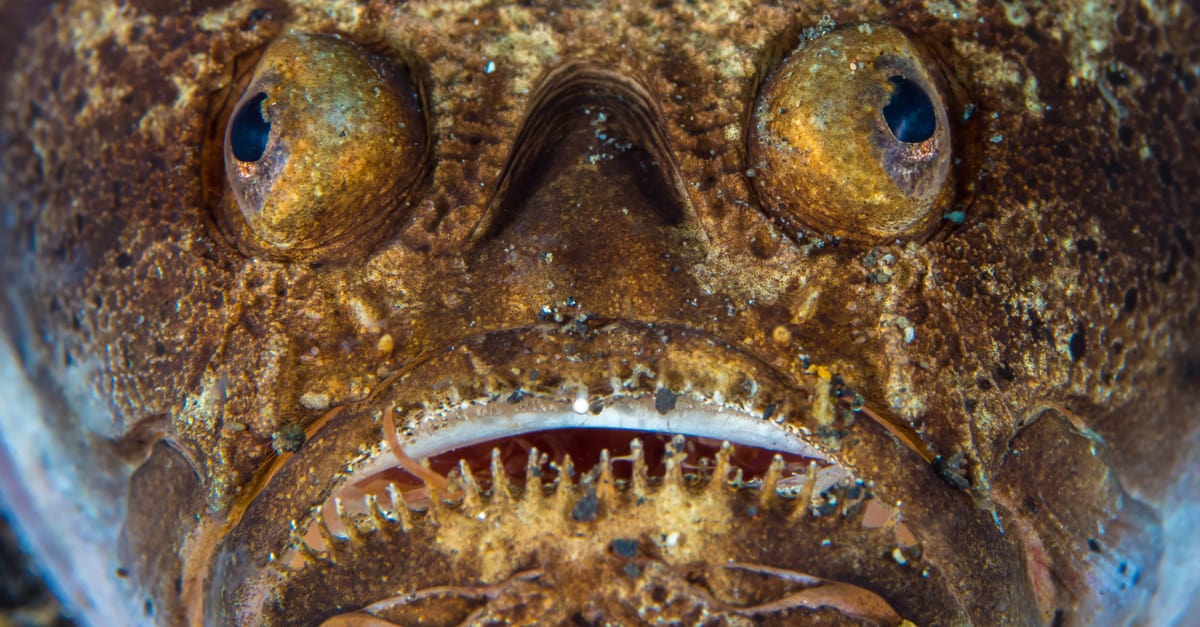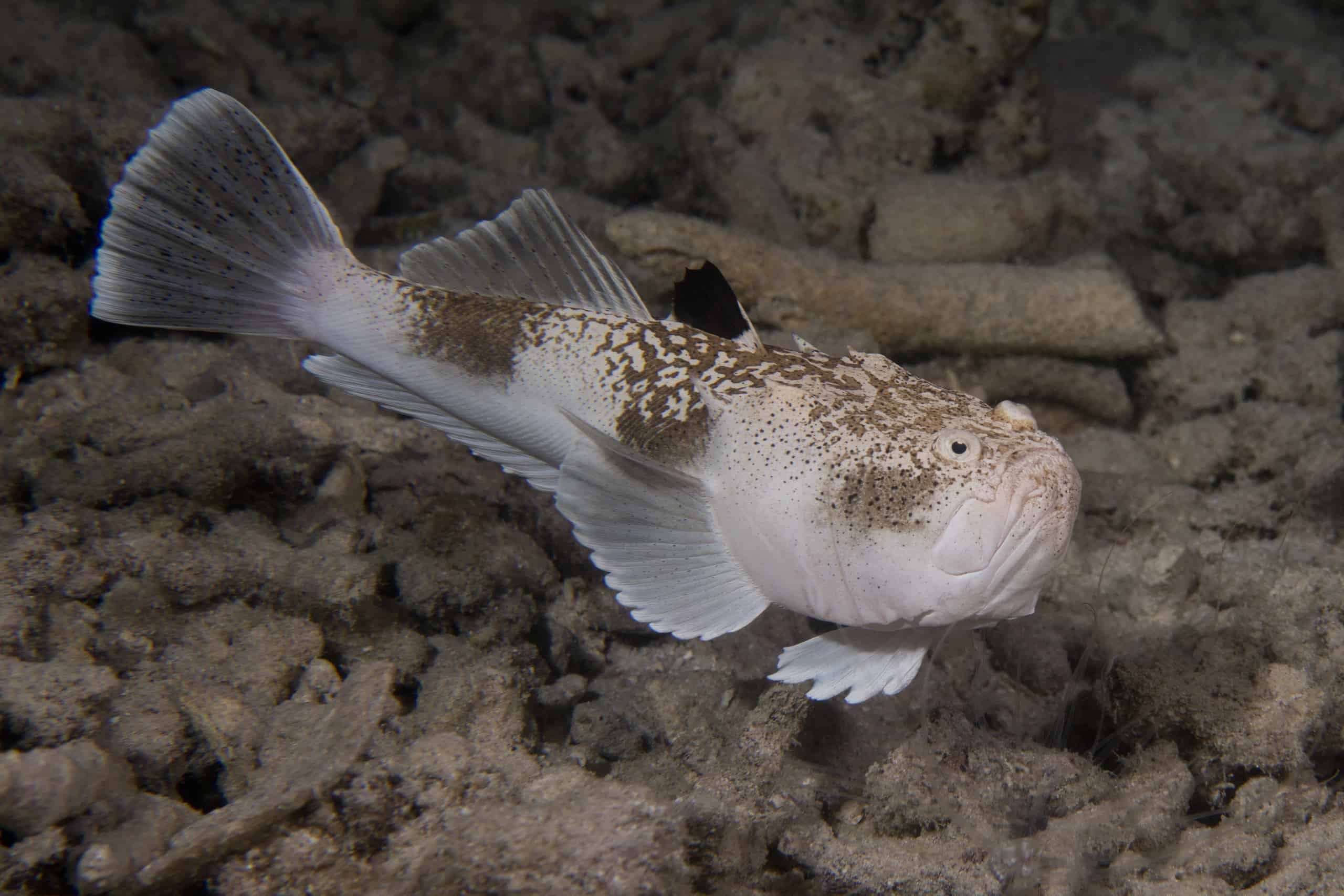The Stargazer Fish: Unveiling The Ocean's Hidden Predator
Deep beneath the waves, where the ocean floor meets the mysterious twilight, lurks a creature often dubbed "the meanest thing in creation." This isn't a mythical beast from ancient lore, but a very real and utterly fascinating inhabitant of our seas: the stargazer fish. With its eyes perpetually gazing upwards, a master of camouflage, and an arsenal of unique defensive and predatory adaptations, this enigmatic fish truly stands apart in the marine world. Its cunning strategies, specialized anatomy, and formidable capabilities make it a subject of endless intrigue for marine biologists and ocean enthusiasts alike. From its shocking defense mechanisms to its lightning-fast ambush tactics, the stargazer is a testament to nature's incredible ingenuity in crafting the ultimate benthic predator.
The name "stargazer" itself hints at its most striking feature – its dorsally or dorsolaterally directed eyes, positioned on or near the top of its large, flattened cuboid head. This upward gaze is not for admiring the celestial bodies above, but rather a crucial adaptation for its predatory lifestyle, allowing it to survey the waters above while remaining almost entirely buried. This article will delve into the captivating world of the stargazer fish, exploring its diverse species, unique adaptations, habitats, and the reasons why it has earned such a formidable reputation. Prepare to uncover everything you ever needed to know about one of the world's strangest groups of ambush predators.
Table of Contents
- What is a Stargazer Fish?
- Appearance and Anatomy: Built for Ambush
- Habitat and Distribution: Where They Lie in Wait
- The Art of Ambush: Hunting Strategies
- Deadly Defenses: Electric Shocks and Venom
- Stargazer Species Spotlight
- Reproduction and Life Cycle of the Stargazer
- Stargazers in Captivity: A Unique Challenge
- Conclusion: The Enigmatic Stargazer
What is a Stargazer Fish?
The term "stargazer" can refer to any of the 50 or so species of fish in the family Uranoscopidae, a group of bony fish within the order Perciformes. These creatures are primarily found on the ocean floor, where their unique adaptations allow them to thrive as highly specialized predators. In the United States, folks are likely most familiar with those in genus *Astroscopus*, a group of bony fish found in the Atlantic and Pacific waters in the Western Hemisphere. The scientific name *Astroscopus* itself is Latin for "one who aims at the stars," a direct nod to their distinctive upward-facing eyes. Another related family, Dactyloscopidae, also encompasses species known as sand stargazers, sharing similar ambush predatory behaviors, though Uranoscopidae are often distinguished as "electric stargazers" due to their unique bioelectric capabilities. The stargazer fish is not just a single entity but a diverse family, each species having evolved subtle variations in appearance, habitat, and specific predatory tools. Despite these differences, they all share the fundamental characteristics that define them as stargazers: a mastery of camouflage, a preference for burying themselves, and an almost instantaneous strike capability. Their reputation as one of the ocean's more formidable bottom-dwellers is well-earned, rooted in their effective and often surprising methods of hunting and self-defense.Appearance and Anatomy: Built for Ambush
Stargazers possess a physical form perfectly tailored for their ambush predatory lifestyle. They have tapered bodies and big, heavy, flat heads, giving them a somewhat top-heavy appearance. This flattened cuboid head is a crucial adaptation, allowing them to bury themselves almost entirely in the sand or mud, with only their eyes and mouth exposed. Their eyes, as their name suggests, are dorsally or dorsolaterally directed, placed on or near the top of their head, providing an excellent vantage point for spotting unsuspecting prey swimming above. This unique eye placement is a defining characteristic of the Uranoscopidae family. Their mouths are another remarkable feature, slanting vertically and often lined with cutaneous cirri, or fringe-like appendages. This specialized mouth and jaw structure enables them to gulp prey efficiently when it comes within range, allowing for a swift and decisive strike. Some species also possess a bioluminescent organ on their head, which they can use as a lure to attract smaller fish, further enhancing their predatory prowess. Their coloration typically mimics their sandy or muddy surroundings, providing exceptional camouflage that renders them virtually invisible to both predators and prey. This combination of physical attributes makes the stargazer a formidable and almost undetectable hunter of the ocean floor.Habitat and Distribution: Where They Lie in Wait
Stargazer fish are primarily found on the ocean floor, where they camouflage themselves in sand or mud to remain hidden from predators and prey alike. They typically inhabit shallow waters of seas and oceans, though some species can be found at greater depths. For instance, the Northern Stargazer (*Astroscopus guttatus*) can be found up to depths of 120 feet (37 meters). They are quite commonly found in the Mediterranean Sea and the Atlantic Ocean, reflecting their widespread distribution across various temperate and subtropical marine environments. Their native range extends across vast stretches of the globe. In the United States, species like *Astroscopus guttatus* (the Northern Stargazer) are native to the Atlantic shores, specifically found between the states of North Carolina and New York. The Atlantic Stargazer (*Uranoscopus scaber*) is a marine, subtropical fish of the family Uranoscopidae, also prevalent in the Atlantic. Furthermore, the Whitemargin Stargazer (*Uranoscopus sulphureus*) is widespread in the Indo-Pacific region, including the Red Sea, Indonesia, Fiji, Samoa, and Tonga. This broad distribution highlights their adaptability to various benthic environments, as long as there is a suitable substrate for their burying habits and an ample supply of prey.The Art of Ambush: Hunting Strategies
The stargazer fish is the epitome of an ambush predator. Its entire existence revolves around the art of deception and the element of surprise. Stargazers habitually bury themselves in the bottom, often leaving only their eyes and mouth exposed. This incredible camouflage, combined with their motionless waiting, makes them virtually undetectable. The stargazer instead relies on its camouflage and lies in wait for a small fish to swim near it. They are not active hunters that chase down their prey; instead, they are masters of patience, conserving energy until the perfect moment arises. Once the prey is in range, the stargazer rises from the sand and in an instant swallows the fish whole. This strike is incredibly fast, often described as a "vacuum" action, where their specialized mouth and jaw structure enables them to gulp prey efficiently. Their large, vertically-oriented mouths are perfectly designed for this sudden, upward engulfment. Some species, as mentioned, may even use a worm-like appendage or a bioluminescent lure to entice curious prey closer, drawing them into the strike zone. This combination of stealth, patience, and explosive speed makes the stargazer fish one of the most effective and feared ambush predators of the seafloor.Deadly Defenses: Electric Shocks and Venom
Beyond their predatory prowess, stargazer fish are also equipped with formidable defensive mechanisms that make them truly unique and dangerous creatures. They are known for their ability to produce electric shocks and possess venom, earning them their fearsome reputation.Bioelectrogenesis: The Electric Stargazer
One of the most remarkable adaptations of the stargazer fish, particularly members of the Uranoscopidae family, is their capacity for bioelectrogenesis, or the ability to generate an electric charge. They can produce electric shocks, a rare trait among fish. This electrical organ is located in a specialized pouch behind their eyes. It's important to note that prey capture does not involve the electrical organ. Its main function is to protect the stargazer from anything that may pose a threat to the well-being of the fish. If a larger predator or an unsuspecting human steps on or disturbs a buried stargazer, it can deliver a significant electric shock, deterring the threat. The voltage can vary by species and size, but it's certainly enough to cause discomfort and pain, serving as a powerful warning.In addition to their electric capabilities, many stargazer species are also venomous. They have venomous spines located on their dorsal fins and above their pectoral fins. These spines are typically hidden when the fish is buried but can be quickly erected when the fish feels threatened. The venom delivered through these spines can cause intense pain, swelling, and even systemic effects in humans. While generally not lethal, a stargazer sting can be extremely painful and debilitating, requiring medical attention. This combination of electric shock and venomous spines makes the stargazer fish a creature to be approached with extreme caution, solidifying its reputation as one of the ocean's most dangerous bottom-dwellers.
Stargazer Species Spotlight
With approximately 50 species spread across 8 different genera, the stargazer family exhibits fascinating diversity. While all share the core characteristics of ambush predation and upward-gazing eyes, specific species highlight unique traits and geographical distributions.The Northern Stargazer (Astroscopus guttatus)
*Astroscopus guttatus*, or the Northern Stargazer, is a well-known species in the Western Atlantic. First described by Charles Conrad Abbott in 1860, this fish can reach impressive lengths of up to 22 inches (56 cm). It is primarily found on the Atlantic shores between the states of North Carolina and New York in the United States, inhabiting sandy or muddy bottoms from shallow coastal waters down to depths of 120 feet (37 meters). The Northern Stargazer is a classic example of its family, showcasing the large, flattened head, upward-pointing eyes, and the ability to bury itself completely. Like other electric stargazers, it possesses an electric organ behind its eyes for defense, capable of delivering a potent shock.The Atlantic Stargazer (Uranoscopus scaber)
The Atlantic Stargazer (*Uranoscopus scaber*) is another prominent member of the Uranoscopidae family, widely distributed in the Mediterranean Sea and the Eastern Atlantic Ocean. This marine, subtropical fish is perfectly suited for living on the sea floor, with its body shape and coloration providing excellent camouflage. It is also one of the few fish capable of bioelectrogenesis, generating an electric charge as a defensive mechanism against potential threats. Its predatory strategy mirrors that of other stargazers, relying on stealth and a lightning-fast strike to engulf unsuspecting prey. The Atlantic Stargazer is a common encounter for divers and fishermen in its native range, though its hidden nature often means it goes unseen until disturbed.The Whitemargin Stargazer (Uranoscopus sulphureus)
The Whitemargin Stargazer (*Uranoscopus sulphureus*) is a fish of the family Uranoscopidae, widespread across the Indo-Pacific region. Its habitat includes diverse locations such as the Red Sea, Indonesia, Fiji, Samoa, and Tonga. Like its Atlantic and Northern counterparts, it is an adept ambush predator, burying itself in the substrate and waiting for prey to come within striking distance. While specific details on its electric capabilities or venom potency may vary slightly from other species, it adheres to the general defensive strategies characteristic of the stargazer family. Its broad distribution across tropical and subtropical waters highlights the adaptability of these unique bottom-dwelling fish.Reproduction and Life Cycle of the Stargazer
Information on the specific reproductive cycles and life spans of all stargazer species can be somewhat limited due to their elusive, bottom-dwelling nature. However, general patterns observed in marine bony fish apply. Stargazers are typically oviparous, meaning they lay eggs. Spawning usually occurs in warmer months, with females releasing eggs into the water column, which are then fertilized externally by males. The eggs are often pelagic, floating in the open water before hatching into larvae. The larval and juvenile stages of stargazer fish likely spend time in the water column, feeding on plankton, before settling down to a benthic (bottom-dwelling) lifestyle as they mature. Once they adopt their adult form, they begin to exhibit the characteristic burying and ambush behaviors. Their lifespan can vary significantly depending on the species and environmental factors, but many marine fish of their size can live for several years in the wild, assuming they avoid predators and human interference. Their hidden lifestyle likely contributes to their survival by reducing exposure to threats.Stargazers in Captivity: A Unique Challenge
While the stargazer fish is a unique and fascinating species, it requires specific care to thrive in captivity. Keeping a stargazer in an aquarium is not for the faint of heart or the inexperienced aquarist, primarily due to their specialized needs and potentially dangerous attributes (electric shock and venom). This comprehensive guide will explore everything you need to know about understanding, setting up, feeding, and maintaining the health and wellness of stargazer fish in a captive environment.Setting Up a Stargazer Aquarium
The primary consideration for a stargazer aquarium is providing a deep, soft substrate. Since these fish habitually bury themselves, a sand bed of at least 4-6 inches (10-15 cm) is essential. The tank size should be generous, not necessarily for swimming space, but to accommodate their size and provide ample burial area. A tank of at least 75 gallons (280 liters) is recommended for smaller species, with larger tanks needed for species like the Northern Stargazer that can reach over 20 inches. Water parameters should mimic their natural marine environment: stable salinity (around 1.023-1.025 specific gravity), temperature (typically 72-78°F or 22-26°C depending on species origin), and excellent water quality with low nitrates. Filtration should be robust, but water flow should be gentle at the bottom to avoid disturbing the sand. Avoid sharp decorations that could injure the fish.Feeding and Diet in Captivity
As predatory species, stargazers primarily feed on smaller fish in the wild. In captivity, their diet should consist of a variety of meaty foods. Live feeder fish (such as guppies or mollies, though caution is advised due to disease risk), silversides, shrimp, squid, and pieces of fish are suitable options. They may also accept frozen foods once acclimated. Feeding can be a unique experience; some aquarists use tongs to present food directly to the buried fish, mimicking prey swimming overhead. It's crucial to ensure they are getting enough to eat, as they are not active foragers. Overfeeding should be avoided to maintain water quality, but consistent, appropriate portions are key to their health.Health and Wellness in Captivity
Maintaining the health and wellness of a stargazer fish involves careful observation and preventative measures. Due to their buried nature, it can be challenging to spot signs of illness early. Look for changes in behavior, such as refusing to bury, unusual swimming patterns (if they emerge), or visible lesions if they do come out. Water quality is paramount; poor water conditions can lead to stress and disease. Regular water changes and diligent tank maintenance are non-negotiable. Compatibility with tank mates is another critical factor; given their predatory nature, only very large, fast-moving fish that cannot be swallowed or shocked should be considered as tank mates, or ideally, they should be kept in a species-specific tank. Handling a stargazer should always be done with extreme caution, using thick gloves and appropriate tools to avoid their venomous spines and electric shock capabilities. Breeding stargazer fish in captivity is exceptionally rare and complex, typically only achieved in specialized research facilities.Conclusion: The Enigmatic Stargazer
The stargazer fish, truly one of the world's strangest groups of ambush predators, is a marvel of marine evolution. From its upward-gazing eyes and flattened head to its lightning-fast strike and formidable defensive capabilities, every aspect of its being is tailored for a life of hidden predation on the ocean floor. We've explored how these fascinating creatures, encompassing nearly 50 species across various genera like *Uranoscopus* and *Astroscopus*, bury themselves in sand or mud, waiting patiently to vacuum, electrocute, and even venom their unsuspecting prey or deter threats. Their unique adaptations, including bioelectrogenesis and venomous spines, firmly establish their reputation as "the meanest thing in creation," demanding respect and caution from anyone encountering them. Understanding the stargazer fish not only deepens our appreciation for marine biodiversity but also highlights the incredible ingenuity of life in adapting to specialized niches. Whether you're a seasoned aquarist considering the challenge of keeping one of these unique fish, a marine enthusiast captivated by their cunning strategies, or simply curious about the hidden wonders of the deep, the stargazer offers endless intrigue. What aspects of the stargazer fish do you find most fascinating? Share your thoughts in the comments below! If you enjoyed this deep dive into the world of the stargazer, be sure to explore our other articles on unique marine life and uncover more of the ocean's hidden secrets.
Stargazer Fish

Stargazer Fish Pictures - AZ Animals

Stargazer Fish Facts - Uranoscopus scaber - A-Z Animals